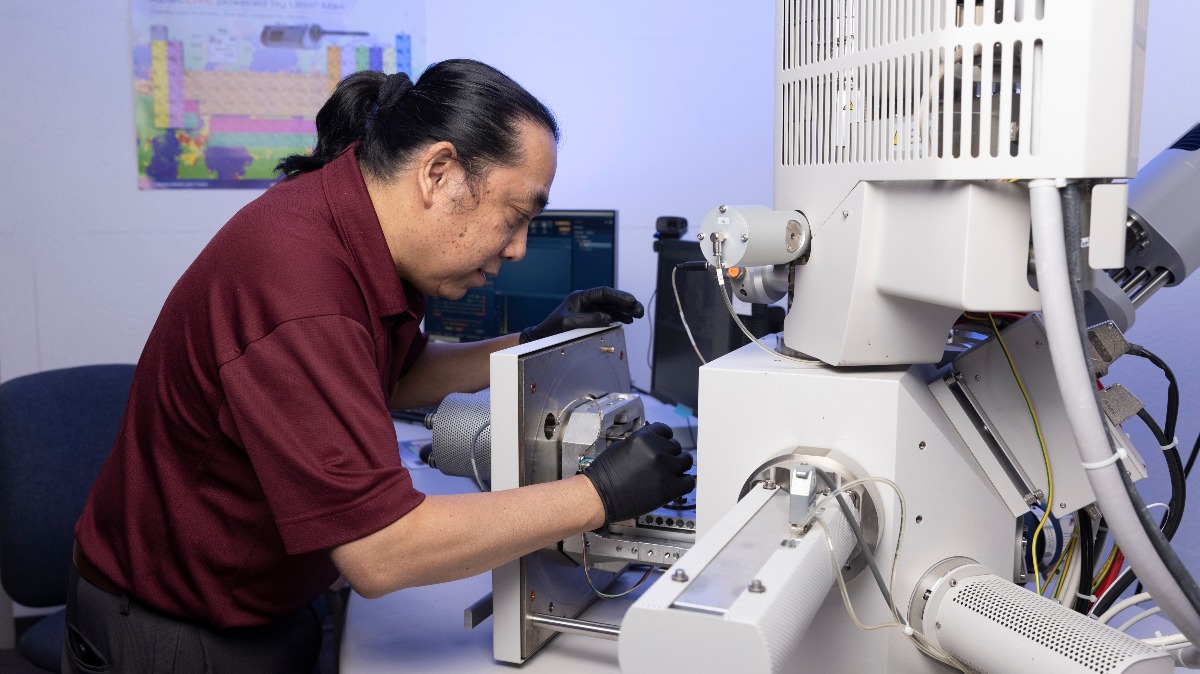There are two things Dr. Ridwan Sakidja, professor in the department of physics, astronomy and materials science at Missouri State University, is passionate about: computational materials science and interdisciplinary research.
Computational materials science involves use of modeling, simulations, theory and data processing.
These processes allow researchers to better understand materials as matter humans can make into things.
Some of his latest collaborative projects have focused on reducing costs and energy in manufacturing.
Developing material at a lower cost with machine learning
Sakidja and collaborators from UMKC and Ohio State strive to produce body armor at a lower temperature, which lowers the cost.
Typically, body armor materials are manufactured at 1500 degrees Celsius. Such temperatures consume an incredible amount of energy.
“The low-temperature process that we helped model offers an alternative route. It dramatically reduces the necessary temperature to less than 300 degrees Celsius,” Sakidja said. “This is a significant saving in energy and operating cost.”
The collaborative project is funded by the National Science Foundation.
New material for the next generation
Sakidja and his graduate assistants also aim to develop new materials for turbine engines. The research project is supported by the Department of Energy.
These materials would allow the engines to operate at higher temperatures but with less energy and costs.
Using supercomputer clusters, they can predict the performance of a complex material called the nickel-based “superalloy”.
The metal gets its name from its ability to withstand high temperatures and stresses.
“We work together to design and predict the mechanical properties of the next generation of superalloys,” he said.

